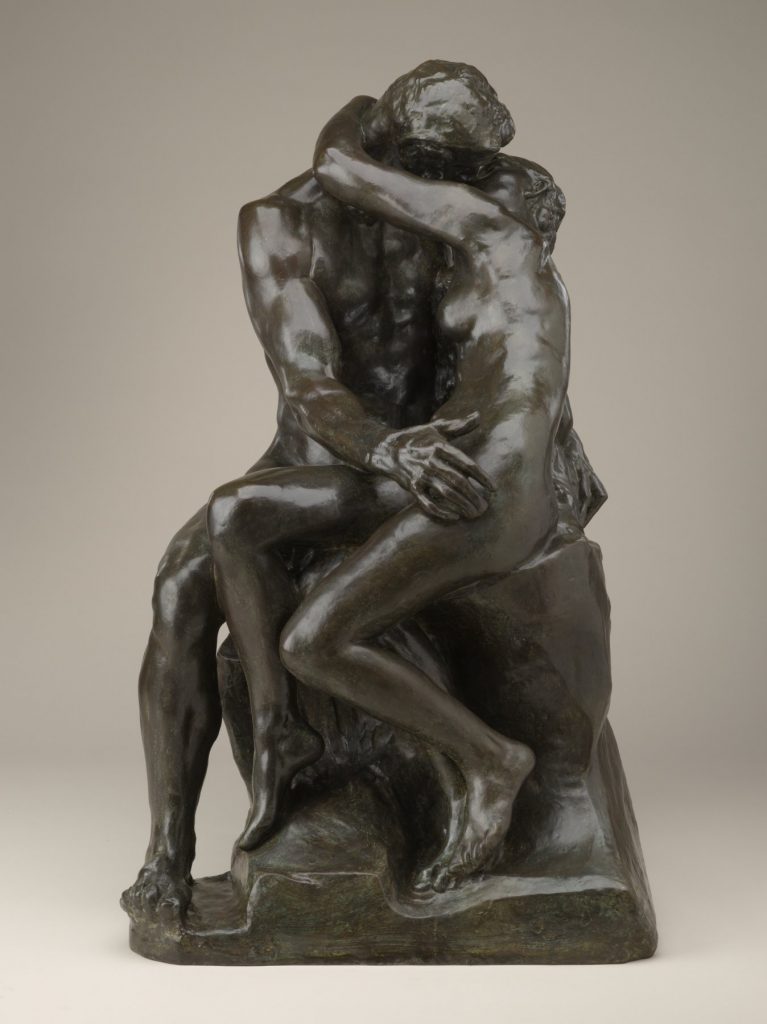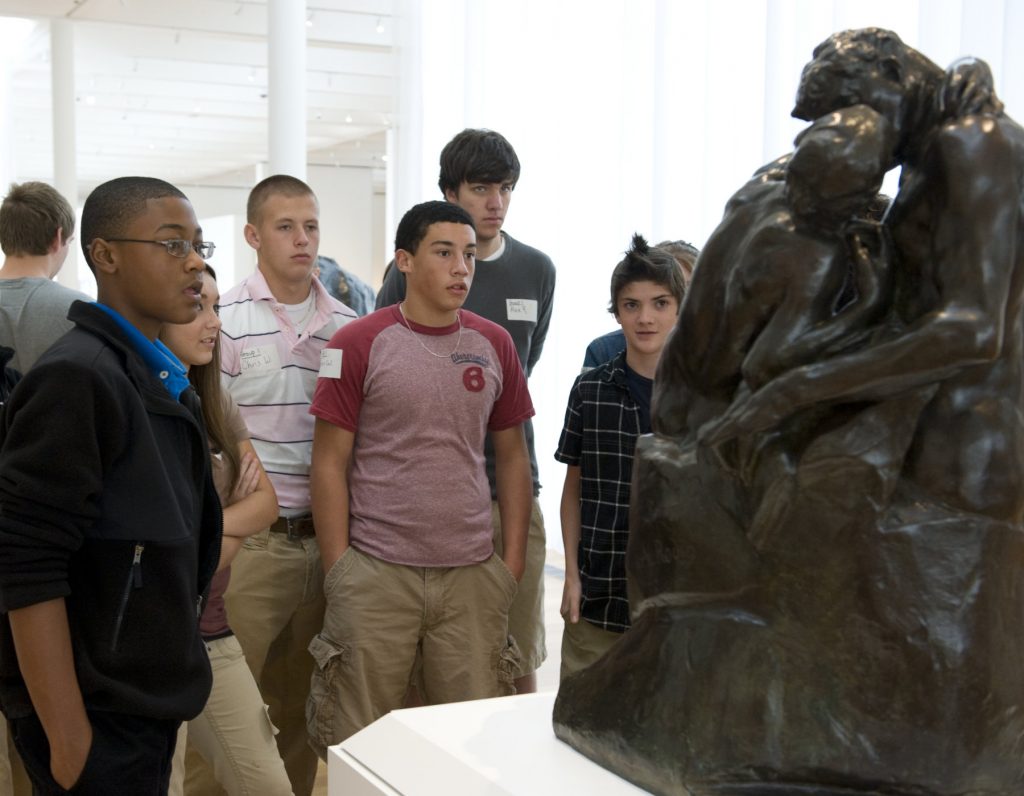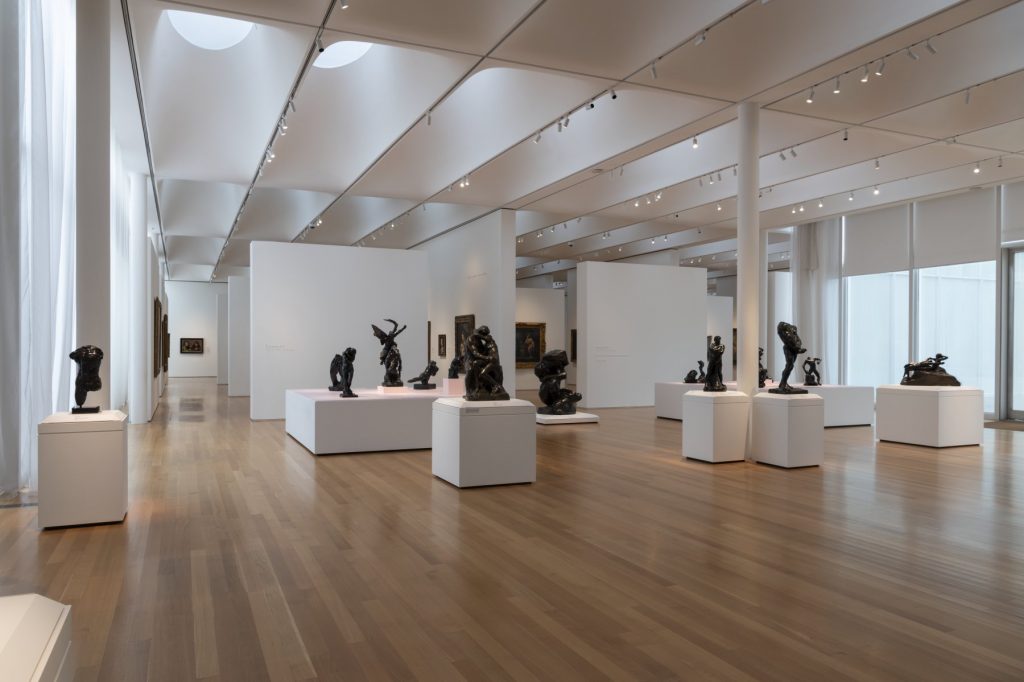The Kiss (work of art)
Artwork Info
Key Ideas
- Auguste Rodin was an innovative sculptor who was influenced by classical Greco-Roman traditions of sculpting as well as psychology.
- Rodin created this sculpture in bronze. The high copper content of bronze makes it turn green when it is left outdoors.
- The Kiss was inspired by the love affair between two real people named Paolo and Francesca. Their tragic story was retold in Dante’s epic poem Inferno. Rodin depicted the lovers at the moment of their first kiss.
- The sculpture was celebrated by the public in France, but people were outraged and offended by it when it went on view in England in 1914.
Learn More
This sculpture was designed for The Gates of Hell, an ornate doorway to a decorative arts museum in Paris. In The Kiss Rodin depicts Paolo and Francesca, a real-life couple in 13th-century Italy. Their tragic love story was retold in Dante’s epic poem Inferno. This poem inspired Rodin’s sculptures for The Gates of Hell.
Paolo and Francesca are referred to as “tragic lovers” because they were murdered when their affair was discovered. Francesca was engaged to Paolo’s brother, who was her tutor. In Dante’s poem Inferno, Francesca says her love affair with Paolo began innocently while they were reading for fun. They were reading a famous love story about Sir Lancelot and Guinevere, and when they read about the main characters kissing, they lost self control and kissed each other. At that moment Francesca’s fiancé (Paolo’s brother) caught them kissing and murdered them.
When Rodin first exhibited the sculpture in 1887, critics called it The Kiss. It has been known by that title ever since. It was first shown in France, where the public loved it. Bronze casts were used to make copies of the sculpture so it could be displayed in other parts of the country. In 1900 a wealthy American art collector named Edward Perry Warren, who was living in England at the time, commissioned Rodin to make another marble sculpture of the two lovers. It was displayed in public in 1904, and British viewers complained that the artist’s detailed depiction of lust was offensive. In response to the public outrage, The Kiss was hidden for two years. It was returned to Warren, and he had to hide it to keep people from destroying it. It became part of the Tate Museum’s collection in London in 1928.
Additional Resources
Resources for Teachers:
- Read an article about the story behind Rodin’s The Kiss.
- View another version of The Kiss at the National Gallery of Art.
- Watch a short video about this sculpture at the NCMA.
Resources for Students:
- View a statue of the earliest cast of The Kiss.
- Watch a video about The Kiss and how it shocked people when it was first shown in public.
- Watch a short video summary of the epic poem that inspired Rodin to create this sculpture.



